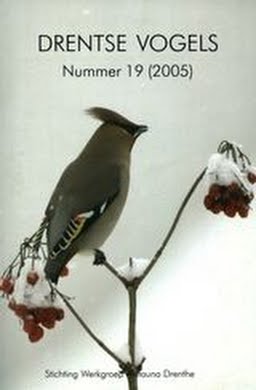2005
Het Broedsucces van de Kievit Vanellus vanellus en Scholekster Haematopus ostralegus in agrarisch en suburbaan gebied bij Assen
Publication
Publication
Drentse vogels , Volume 19 - Issue 1 p. 26- 37
Pairs, nests and families with chicks of Lapwing and Oystercatcher were followed intensively throughout the breeding season in four Areas near Assen, Deurze (190 ha) is an open and intensively managed agricultural area with 58% arable land and 42% grassland. Amelte (60 ha) consists of 60% arable land and 40% small scale meadows, grazed by horses, ponies and sheep. Graswijk (5 ha) is a piece of wet, low lying land between recently built offices and roads. Bedrijvenpark Assen-oost is an area with light industries, wholesale trade companies etc. The ground between the companies mainly exists of frequently mown lawns. Where they had the choice, lapwings preferred arable land to breed. In 2004 many early clutches were predated upon, mainly by Red Fox, but the majority of repeat clutches hatched (Table 1). Repeat clutches were more successful with a nest survival of 55-72%. Lapwings with chicks preferred small scale meadows grazed bij horzes and ponies. The total reproduction showed great difference between the investigated areas (0,0 -1,63 Young pair). In de agricultural area Oystercatchers produced no fledgelings, but in 2005 they reached a reproduction of 0,63 Young/pair in the urban area. Probably the reproduction of Lapwing and Oistercatcher are insufficient to maintain a stable population. The low reproduction rate is mainly caused by chick mortality.
| Additional Metadata | |
|---|---|
| Drentse vogels | |
| CC BY 3.0 NL ("Naamsvermelding") | |
| Organisation | Werkgroep Avifauna Drenthe |
|
Bert Dijkstra. (2005). Het Broedsucces van de Kievit Vanellus vanellus en Scholekster Haematopus ostralegus in agrarisch en suburbaan gebied bij Assen. Drentse vogels, 19(1), 26–37. |
|
